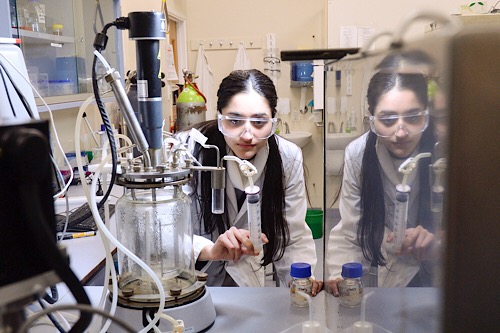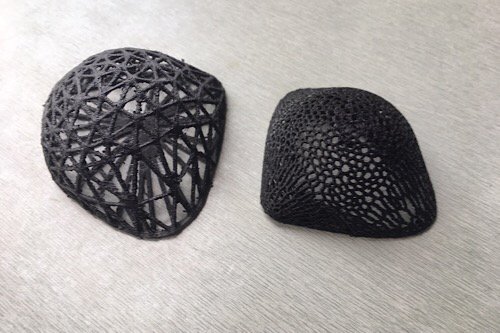Shalini Guleria, Masters student at the University of Waikato, New Zealand, is aiming to 3D print breast tumor cells to identify the best treatment for cancer patients.
With the intentions of reducing long-term, painful cancer treatments such as chemotherapy and radiotherapy, Guleria plans to grow and test cancer tumors outside of a patient’s body using real cells. These bioprinted tumors will follow the design of her 3D printed plastic tumor models.
“In the future what could happen is if someone has breast cancer, we could take their tumor cells and print out a tumor and try out different drugs on it and see which treatments work and what works best for the patient, explained Guleria. “It’s all about making treatment more patient-specific.”

Growing a 3D printed tumor
To support her research, Guleria has printed webbed, palm-sized hemispheres – resembling breast cancer tumors – which will be the basis for her bioprinted models. Guleria will replace the plastic from the prototype model with cancer cells (known as MCF-7), hydrogel and additional binding materials, which will ultimately grow into a life-sized tumor.
As the bioprinted tumor mesh grows, Guleria plans to observe the rate at which it increases in a 3D model when compared with a 2D model. “Currently the easiest way to do pharmaceutical tests on cancer cells is using 2D models which is basically a petri dish where the cells stick to the bottom of the dish and you analyze them. But humans are three dimensional and 2D doesn’t really present an actual human tumor,” said Guleria.
“Once the tumour is printed we will be able to slice it and look into the depths of the cell. You can look at how the tissues are growing, the fibres connecting and the cell organelles – the things that make the cell grow – how they differ to the 2D model.”
Guleria also plans on using Cisplatin, a common breast cancer chemotherapy drug, on the fully-grown bioprinted tumors to observe its reactions. This experimentation could potentially decrease the dosages, treatment time, and trauma experienced by a real cancer patient.

Attacking cancer with bioprinting
Guleria, who is studying for a Master of Science with a focus on tissue engineering, became interested in cancer research after the death of a close friend who suffered from leukemia.
“She was only 17 and passed away a year after her diagnosis. I was always interested in medical science but when that happened it really hit me and to grieve I went crazy into cancer research,” said Guleria.
Giving cells a 3D environment in order to analyze disease progression is just the first step for Guleria’s research. Her long-term goal seeks to use patient-specific cells to create to determine the most effective cancer treatments.
“We may be able to take the cells from someone who has cancer, and use them to produce something we can test very specifically for that patient,” added Guleria.
“Then we could make a detailed treatment plan for an individual’s body, rather than take a generic approach. A panadol might work for you, and not someone else – everyone’s bodies are different.”
Guleria’s research is currently supervised by Dr. Linda Peters, Senior Lecturer of Biological Sciences at the University of Waikato. Furthermore, Andrew Howard, a Master’s of Science (Research) student, is contributing to this project.
Additive manufacturing and cancer research
From 3D printed breast cancer detectors to patient-specific 3D printed molds for breast reconstruction, additive manufacturing has created innovative and advanced methods to improve the treatment of women with breast cancer.
Moreover, bioprinters have enabled more detailed and accurate research for observing cancer cell behavior. Last year, researchers from the Indian Institute of Technology Hyderabad stated that the benefits of bioprinting include: “the ability to precisely place cells and reproduce in vivo tumor microenvironments, enable high throughput screening of drugs and aid the development of next-generation molecular therapies.”
Keep up with the latest news 3D printing sign up to the 3D Printing Industry newsletter, Also, follow us on Twitter, and like us on Facebook.
Are you searching for new talent or seeking a career change? Search and post 3D Printing Jobs for opportunities and new talent across engineering, marketing, sales and more.
Featured image shows the 3D printed plastic tumor models. Photo via the University of Waikato.


